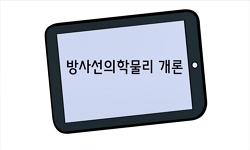Purpose: This study aimed to assess the reliability of measurements performed on three-dimensional (3D) virtual models of maxillary defects obtained using cone-beam computed tomography (CBCT) and 3D optical scanning. Materials and Methods: Mechanical ...
http://chineseinput.net/에서 pinyin(병음)방식으로 중국어를 변환할 수 있습니다.
변환된 중국어를 복사하여 사용하시면 됩니다.
- 中文 을 입력하시려면 zhongwen을 입력하시고 space를누르시면됩니다.
- 北京 을 입력하시려면 beijing을 입력하시고 space를 누르시면 됩니다.
https://www.riss.kr/link?id=A100805801
- 저자
- 발행기관
- 학술지명
- 권호사항
-
발행연도
2015
-
작성언어
English
- 주제어
-
등재정보
KCI등재,SCOPUS,ESCI
-
자료형태
학술저널
- 발행기관 URL
-
수록면
23-29(7쪽)
- DOI식별코드
- 제공처
- 소장기관
-
0
상세조회 -
0
다운로드
부가정보
다국어 초록 (Multilingual Abstract)
Purpose: This study aimed to assess the reliability of measurements performed on three-dimensional (3D) virtual models of maxillary defects obtained using cone-beam computed tomography (CBCT) and 3D optical scanning. Materials and Methods: Mechanical cavities simulating maxillary defects were prepared on the hard palate of nine cadavers. Images were obtained using a CBCT unit at three different fields-of-views (FOVs) and voxel sizes: 1) $60{\times}60mm$ FOV, $0.125mm^3$ ($FOV_{60}$); 2) $80{\times}80mm$ FOV, $0.160mm^3$ ($FOV_{80}$); and 3) $100{\times}100mm$ FOV, $0.250mm^3$ ($FOV_{100}$). Superimposition of the images was performed using software called VRMesh Design. Automated volume measurements were conducted, and differences between surfaces were demonstrated. Silicon impressions obtained from the defects were also scanned with a 3D optical scanner. Virtual models obtained using VRMesh Design were compared with impressions obtained by scanning silicon models. Gold standard volumes of the impression models were then compared with CBCT and 3D scanner measurements. Further, the general linear model was used, and the significance was set to p=0.05. Results: A comparison of the results obtained by the observers and methods revealed the p values to be smaller than 0.05, suggesting that the measurement variations were caused by both methods and observers along with the different cadaver specimens used. Further, the 3D scanner measurements were closer to the gold standard measurements when compared to the CBCT measurements. Conclusion: In the assessment of artificially created maxillary defects, the 3D scanner measurements were more accurate than the CBCT measurements.
동일학술지(권/호) 다른 논문
-
Lateral pterygoid muscle volume and migraine in patients with temporomandibular disorders
- Korean Academy of Oral and Maxillofacial Radiology
- Lopes, Sergio Lucio Pereira De Castro
- 2015
- KCI등재,SCOPUS,ESCI
-
- Korean Academy of Oral and Maxillofacial Radiology
- Kang, Sung-Won
- 2015
- KCI등재,SCOPUS,ESCI
-
- Korean Academy of Oral and Maxillofacial Radiology
- Pittayapat, Pisha
- 2015
- KCI등재,SCOPUS,ESCI
-
Intravenous contrast media application using cone-beam computed tomography in a rabbit model
- Korean Academy of Oral and Maxillofacial Radiology
- Kim, Min-Sung
- 2015
- KCI등재,SCOPUS,ESCI






 ScienceON
ScienceON







